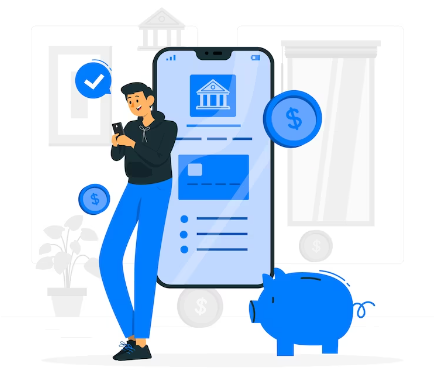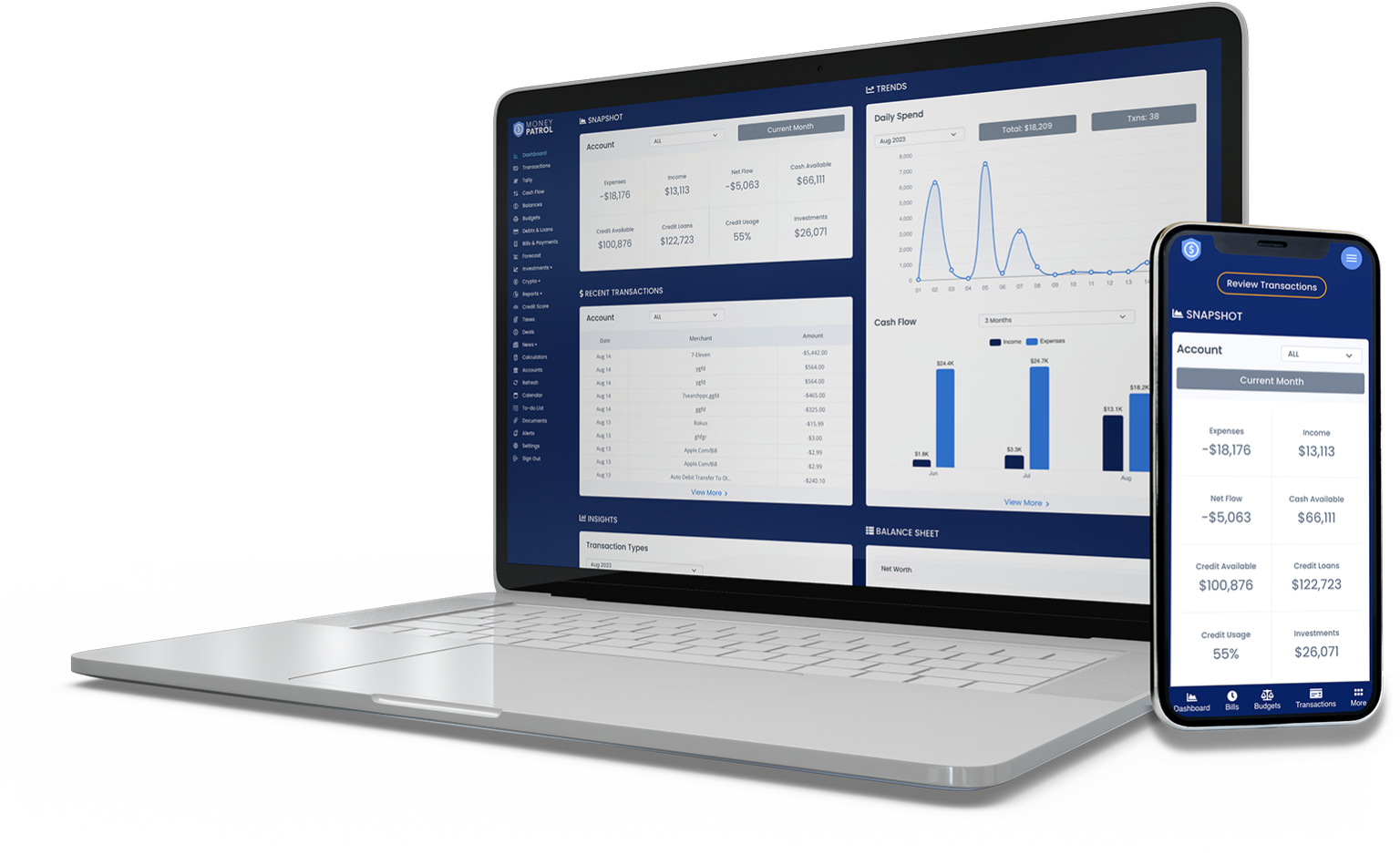An asset or object purchased to earn revenue or appreciation is an investment. The term “appreciation” refers to an asset’s value increasing over time. When a person buys something as an investment, the goal is not to consume it but to build wealth in the future.
- For instance, an investor might buy an economic instrument now with the expectation that it would generate profit in the future or be sold at a better price later for a profit.
When you invest your money, you’re deciding to put your money, trust, and time into an asset to make a profit.
Every investment carries some level of risk, and various types of assets include varying degrees of risk. You might lose money as well as make money.
- Your investment objectives, risk tolerance, and time horizon can all impact where you put your money.
You may also have a desire to own a home, wish to provide a better future for your children, or want to increase your savings so that you may retire comfortably.
If you’re wondering where to put your money to make money, the truth is that it relies on a variety of things, and there is no one specific recipe for a successful investing strategy. Remember that investing entails risk, whatever your goal, because profits aren’t always guaranteed. If the value of your investment drops, you could earn profits, draw sometimes, or even lose money.
Here are some investing suggestions and chances for novices with that in consideration.
- Savings are typically intended for short- and medium purposes, such as a car repair emergency fund.
Investing is when you deposit money into a bank account or a mutual fund to profit. Investing can provide more significant benefits (and higher risk) over time. That’s why some users utilize investing to help them achieve long-term objectives like retirement.
1. What is an Investment?
Investing and speculating is not the same thing. Speculators rarely seek ownership, but investors frequently seek to increase the number of assets in their holdings over time. They are investing in purchasing assets to keep them long-term, whereas speculation entails exploiting market inefficiencies for a quick profit.
Even though speculators frequently make well-informed selections, speculation is rarely classified as traditional investing. Speculation is often thought to be a riskier venture than standard investing. However, it varies based on the sort of investment. Some experts relate speculating to gambling. Hence, the accuracy of this comparison may be subjective.
- Investing in stocks is a test of your ability to take risks. You can forecast the future and expect that the company’s performance improves and the stock price rises. When the stock price rises, you will soon be able to trade it for a better price.
- There is nothing you can do to change the course of events in the future. Anything that could disrupt your ambitions could occur to the business, its sector, its field, the country’s economy, and even the world economy.
The more a stock increases, the more people assume there has to be something positive about it. In specific ways, causality and effect are inverted. Value Investing is, at its core, an investment strategy that accomplishes the exact opposite. There are numerous options available.
There are several ways to define value investing, and they all refer to the same simple concept: buying undervalued quality stocks. It’s about shopping on a budget and being conscious of the notion that when something is pricey, it must be excellent.

2. What are Short-term and Long-term Plans?
Never invest in capital markets like bonds, stocks, mutual funds. If investing in stocks is your choice, you should always keep a 10-year window or more to allow your money to grow. Stocks are volatile; they go up and down rather quickly. It makes stocks the riskiest of investments. High returns come with higher risks. The longer you hold an investment, the less complicated and valuable it becomes. Being consistent is the key here.
- There is a saying that there is no such thing as a risk-free investment. You can, however, get quite close.
One option is to invest in government-issued securities in stable economies. The gold standard is still US-issued bonds. To be scared of losing their investment in the United States, you must imagine the government of the United States collapses.
- AAA-rated corporate bonds offered by large, reliable corporations are the next safest option. Such securities are, without a doubt, the most acceptable way to protect your principal while earning a pre-determined rate of interest.
The risks are comparable to those associated with government bonds. To be concerned with losing money purchasing in IBM or Costco bonds, you’d have to picture them going bankrupt.
- Money can also be used to make extremely safe investments.
Income-focused investors may purchase some of the fixed-income securities discussed above. Their priorities, however, change to money. They’re seeking assets that will provide a steady source of revenue. And, to get there, they may be willing to take on a little more risk.
- It is frequently the top objective for retirees who desire a consistent monthly income with inflation.
Income-focused investors may purchase some of the fixed-income securities discussed above. Their priorities, however, change to money. They’re seeking assets that will provide a steady source of revenue. And, to get there, they may be willing to take on a little more risk.
It is frequently the top objective for retirees who desire a consistent monthly income with inflation.

3. What are the other options for Investment?
- Hedge Fund:
Hedge funds aggregate money from investors and invest it in the hopes of making a profit. Hedge funds, unlike mutual funds, often offer more flexible investment methods. Many hedge funds strive to benefit in various markets by employing leverage, that is, borrowing to enhance investment exposure while also increasing risk, short-selling, and other speculative investment strategies that mutual funds rarely use.
Benefits of Hedge Funds:
Hedge funds are notorious for their lack of liquidity. That’s correct. If you’re considering investing in a hedge fund, please note that you won’t be able to withdraw liquid funds at any time.
There is a danger where there is the reward! Alternative investments such as hedge funds are exceedingly hazardous.
Hedge funds are exposed to market dangers, even though they promise good yields and large profits. Furthermore, hedge funds are risky by nature, putting them vulnerable to significant losses.
A hedge fund’s varied fund portfolio is another distinguishing feature. It means that, depending on the highest possible returns, a hedge fund can invest in non-traditional assets or traditional assets.
Hedge fund managers frequently use derivatives, currencies, leverage, and equity funds since hedge funds are also open to unusual investments.
- Individual bonds
A bond is an interest-bearing asset requiring the issuers to pay the bondholder a certain amount of money at regular intervals (known as a coupon) and repay the loan principal at maturity. At maturity, zero-coupon bonds pay both the assumed interest and the principal.
A bond is fixed-income security representing an investor’s debt to a borrower. A bond can be regarded as a promissory note between the borrower and the lender outlining the loan’s terms and installments.
Companies, municipalities, states, and sovereign governments use bonds to fund projects and operations. Bondholders are the issuer’s debtholders or creditors.
The end date when the loan’s principal is scheduled to be paid to the bond owner is usually included in the bond specifics, as are the terms for the borrower’s variable or fixed interest payments.
Benefits of Individual Bond:
Bonds have a distinct advantage over other investments. Bonds (particularly short and medium-term bonds) have lower volatility than equities (stocks). As a result, bonds are considered a safer investment than equities.
Bonds also have less day-to-day volatility than stocks, and their interest payments are sometimes higher than the average level of dividend payments.
Bonds are frequently tradable. It is often quite simple for an institution to sell a significant quantity of bonds without significantly impacting the market, whereas equities may be more challenging.
The relative predictability of a set interest payment twice a year and a predetermined lump sum at maturity make bonds appealing.
Fixed-rate, floating-rate, zero-coupon, convertible, and inflation-linked bonds are among the many types of bonds available to investors.

- Certificate of Deposits(COD)
A certificate of deposit (CD) is a savings account in which the issuing bank maintains a predetermined amount of money for a set length of time, such as six months, one year, or five years, in exchange for interest.
When you cash in or redeem your CD, you’ll get back the money you put in plus any interest. Certificates of deposit are regarded as one of the safest ways to save.
A CD purchased from a government-guaranteed bank is guaranteed to $250,000. The $250,000 insurance covers all your accounts at the same bank in your name, not each CD or account you have there.
Benefits of COD:
Safety
Predictability
Flexibility of terms
Better Returns Compared to the Savings Account
- Individual Stocks
When a person invests in a single stock, they essentially purchase ownership. If a person purchased 100 shares of a publicly traded corporation, they would own a proportion of the company.
Companies initially go public to raise funds by selling shares to investors to launch, expand, and grow. After the initial shares are purchased, they can be bought and traded on an exchange or electronically amongst buyers and sellers, with stockbrokers facilitating the process.
Stocks can be used to create money in 2 distinct ways. One method is through stock price appreciation. The other way to make money would be through dividends or returns, company profits distributed to shareholders.
- Exchange-Traded Fund (ETF)
ETFs (Exchange Traded Funds) track indexes such as the NASDAQ-100 Index, S&P 500 Index, Dow Jones Index, and others. An ETF’s shares are part of a portfolio that replicates the yield and return of its underlying index.
The significant distinction between ETFs and other index funds is that ETFs do not attempt to outperform their respective index but rather seek to mimic their performance.
The fact that these ETFs strive to meet their stated objectives daily means that their profitability over more extended periods can diverge dramatically from the multiple or inverse multiple of the index’s performance.
Actively managed ETFs use active management techniques and report their results.
Actively managed ETFs, which follow active management methodologies and report their portfolio holdings daily, are also ETFs. ETFs have been known since the 1980s, but they’ve only recently gained traction.
- Mutual Funds:
Investors purchase mutual funds. A mutual fund is a corporation that collects money from multiple investors and invests it in stocks, bonds, and short-term loans. The mutual fund portfolio comprises all of the fund’s holdings. Each share represents an investor’s portion of the fund’s ownership and revenue.
Benefits of Mutual Funds:
- Management on a professional level. The research is done for you by the fund managers. They choose the securities and keep track of their performance.
“Don’t put all your eggs in one basket,” as the saying goes. Mutual funds usually invest in a variety of businesses and industries. It reduces your risk if one of your companies fails.
Most mutual funds’ initial investment and future purchases are fixed at a low dollar sum.
Investors in mutual funds can redeem their shares for the current net asset value (NAV) + any redemption costs at any time.
Payments of Dividends Dividends on stocks and interest on bonds can both provide income to a fund. The fund then distributes nearly all revenue to the shareholders, fewer expenditures.
Distributions of Capital Gains The value of a fund’s securities may rise in value. A capital gain occurs when a fund sells an investment that has gained value. The fund delivers these capital gains, minus any capital losses, to investors at the end of the year.
NAV has risen. After deducting expenses, the market value of a fund’s portfolio improves, which enhances the value of the fund and its shares. The greater the NAV, the better.

4. What to Buy and What not?
Warren Buffett once said, “All investors should stick to what they know.” If you aren’t informed about what the firm does, how it works, makes money, or the market it is operating in, then it’s not a wise investment at all. Any assets that don’t perfectly fit into your plan or put you closer to your goal, or are riskier than what you can afford, walk away.
- Get Help or Do it Yourself:
If you are clueless about investment even after reading a few articles or guides about it, then investing on your own isn’t a great idea. Thousands of resources are widely available to school you about investment. But If you want to be a DIY (do it yourself) investor, be an educated one. Hire a fiduciary advisor to assist you in making your plan work for investment.
- Control Costs:
Investment costs keep fluctuating from time to time. Investors can invest in low-cost index funds such as mutual funds or ETFs. It’s the best way to keep costs low.
As index funds are passive investments, no large payments are made to the fund managers to decide which stocks to buy, when to buy, and when to sell them. When the index is reconstituted, the change only comes up in the stock market.
- Be Flexible and Monitor your Progress:
Changes may compel you to adjust your plans. Don’t panic and make drastic changes in that spur of a moment. Keep making annual changes in your investment plan work as a shield to protect them against bad decisions and wrong information.
Monitoring your ups and downs is also vital to the return of investment necessary to achieve your goals. It’s a way to gain from buying at low and selling at high margins. Re-balancing helps in managing investment risks and keeping them as planned.
Investment is simple, though not accessible. It takes patience and perseverance to stick with the plan. Know your goals and perspective clear about why you want to invest in the first place.
5. Conclusion
You should assess your risk appetite before making any investing decisions. Different investments come with varying amounts of risk that can affect the potential returns. To figure out how much risk you’re willing to take, first figure out whatever you want to achieve and when you want to do it.- For example, if you’re in your 30s and want to prepare for a nice retirement, you might be ready to take on greater risk because you’ll have more time to recoup your investment if it decreases.
- If you’re expecting to retire in a few years, though, you’re less likely to accept the very same degree of risk because you won’t have as much time.
- Simply put, investment is the allocation of a specific amount of money with the expectation of significant future returns from the asset. The allotted sum’s returns will be either a profit or a loss.





 Our users have reported an average of $5K+ positive impact on their personal finances
Our users have reported an average of $5K+ positive impact on their personal finances
